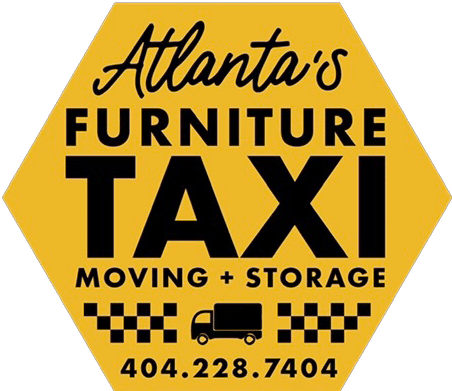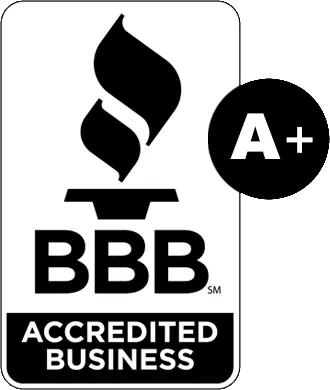No one ever expects disaster to hit their home. But when it does whether it’s a burst pipe, a basement flood, or a kitchen fire everything changes in an instant. You’re left staring at soggy furniture, scorched walls, and the overwhelming question: What now?
The truth is, your next steps matter a lot. Especially when it comes to saving what can be saved. That’s where remediation storage comes in. It’s not just about putting your things in a box or stashing them in the garage. It’s a structured, step-by-step process designed to protect your belongings during cleanup and restoration.
If you’re dealing with the aftermath of water or fire damage, this guide will walk you through what remediation storage is, when to use it, and how to do it right.
Why Remediation Storage Is So Important After a Disaster
When a home suffers fire or water damage, the first priority is stopping the spread and making the space safe. But what about your furniture? Your electronics? Your kids’ baby photos?
Leaving them in a damaged or damp environment puts them at risk of further harm sometimes irreversible. Moisture leads to mold. Smoke leaves behind corrosive residue. Even seemingly “safe” rooms can be exposed to contaminants in the air or structure.
Remediation storage gives you a way to remove, clean, and store your possessions in a secure, climate-controlled environment while your home is being restored. It’s not a luxury. It’s a smart, necessary step in disaster recovery.
Step 1: Assess the Damage and Identify What Can Be Saved
Not everything will make it through a disaster and that’s hard to accept. But acting quickly makes a massive difference.
Walk through your home (safely and preferably with a professional) and evaluate what’s:
- Completely damaged and needs disposal
- Potentially salvageable with proper cleaning
- Undamaged but at risk if left in place
Focus on high-value or sentimental items first: furniture, documents, family heirlooms, electronics. The sooner these are moved to remediation storage, the better your chances of saving them.
Step 2: Get Professional Help if Needed
Depending on the severity of the damage, you may need to bring in restoration experts. This might include:
- Water mitigation crews
- Mold remediation specialists
- Fire and smoke restoration professionals
- Insurance adjusters
- Packing and moving teams
Don’t try to tackle it all yourself. Not only is it physically and emotionally exhausting, but mishandling items especially wet or fragile ones can cause further damage.
At Atlanta Furniture Movers, we regularly partner with remediation teams to assist families during difficult transitions. We help pack, transport, and safely store your belongings so you can focus on what matters most: recovery.
Step 3: Prepare Items for Remediation Storage
Before moving things into storage, they should be cleaned and dried or clearly marked for remediation treatment.
This step is critical. Putting wet or smoke-covered items into storage without proper prep could spread odors, moisture, or mold to other belongings.
What to do:
- Wipe down surfaces (when safe to do so)
- Allow damp items to dry before wrapping
- Separate affected items from clean ones
- Photograph and document everything for insurance
Many restoration companies will handle this for you, especially if your items need deodorization or mold removal before storage. But even if you’re doing it on your own, take the time to prepare carefully.
Step 4: Choose the Right Remediation Storage Facility
Not all storage units are suited for post-disaster belongings. You’ll want a facility that understands the unique needs of remediation storage especially if you’re storing sensitive or partially treated items.
Here’s what to look for:
- Climate control: Avoid further warping, rust, or mold.
- Clean indoor units: Keep your items isolated from weather and pests.
- Strong security: Cameras, gated access, individual locks.
- Flexible access: So you can retrieve or check on things as needed.
- Short- and long-term options: Restoration timelines can change.
In Atlanta’s heat and humidity, temperature-controlled spaces are non-negotiable. Humid air can do as much damage over time as the initial disaster itself.
Step 5: Label, Organize, and Inventory Everything
Once your items are ready to be moved into storage, don’t just toss them in boxes. Organize by room or category, and label clearly. Create a digital inventory with photos if possible this helps with both insurance claims and peace of mind.
If you’re feeling overwhelmed at this stage, let the pros step in. Many remediation storage providers offer packing and inventory services so you know exactly what’s being stored and where.
Organization now saves headaches later especially when it’s time to move things back in.
Step 6: Store Your Items and Breathe
Once your items are safely stored, you’ll likely feel a weight lift. You’ll have room to move forward with cleanup, construction, or relocation without the fear of losing what you value most.
Remediation storage isn’t just about stuff. It’s about emotional relief during a time when everything feels uncertain. It gives you space physically and mentally to rebuild.
Can I Access My Stored Items During the Remediation Process?
Yes, and this is one of the key reasons why professional storage matters. Life doesn’t stop because of a disaster. You might need your child’s school laptop, your tax files, or your winter coat.
At Atlanta Furniture Movers, our clients get flexible access to their stored belongings. You shouldn’t have to jump through hoops just to retrieve something essential.
Remediation Storage After Water Damage: Special Considerations
Water damage spreads fast. If you experienced flooding, a leak, or burst pipes, items may look okay at first but hidden moisture can cause major damage days or weeks later.
Always err on the side of caution:
- Keep wet items out of sealed containers
- Let professionals dry and sanitize soft goods
- Avoid stacking furniture if it hasn’t been fully treated
- Use absorbent padding to protect storage floors
Fire Damage and Smoke: What Makes It Tricky?
Unlike water, fire damage often comes with corrosive smoke and soot that can affect not just visible surfaces, but electrical components and soft materials like fabric and insulation.
Even if your items didn’t catch fire, they may need to be:
- Ozone treated
- Deep cleaned
- Re-wrapped in breathable materials
- Stored separately from clean items
Remediation storage gives you time to assess, treat, and protect your items while the structure of your home is restored.
When the Dust Settles, What Comes Next?
Once your home is repaired, cleaned, and safe again, you can begin moving your belongings back in.
But don’t rush it. Go room by room. Use this opportunity to declutter and reorganize. You’ve been through a lot this is your chance to create a space that feels fresh, clean, and peaceful again.
And if you stored more than you need? Donate it. Sell it. Let go of what no longer serves you. Many people emerge from fire or water damage with a renewed sense of what’s truly valuable. Remediation storage gives you that clarity.
You Don’t Have to Face Disaster Recovery Alone
If you’ve just experienced a home disaster, we know this isn’t just about belongings. It’s about memories, stability, and feeling like you’re in control again.
At Atlanta Furniture Movers, we do more than store your stuff. We help restore peace of mind. Our secure, climate-controlled remediation storage options are tailored for homeowners and families going through difficult transitions. And our team is trained to handle these moments with care, speed, and compassion.
Let us take one thing off your plate. You focus on your home. We’ll protect what makes it yours.
Frequently Asked Questions
What is remediation storage used for?
It’s used to store belongings safely after disasters like water or fire damage while your home is being cleaned or restored.
Can I store items that are still wet or damaged?
Only if they’ve been treated. Wet or smoky items should be professionally cleaned before entering storage to prevent mold or contamination.
How long can I keep things in remediation storage?
As long as you need. Some homeowners use it for a few weeks; others for several months depending on restoration timelines.
Does insurance cover remediation storage?
In many cases, yes especially if recommended by your adjuster. Always check your policy or ask your provider.
Can you help move and pack items into storage after a disaster?
Yes. Atlanta Furniture Movers offers full-service packing, transportation, and storage for families dealing with damage or relocation.







